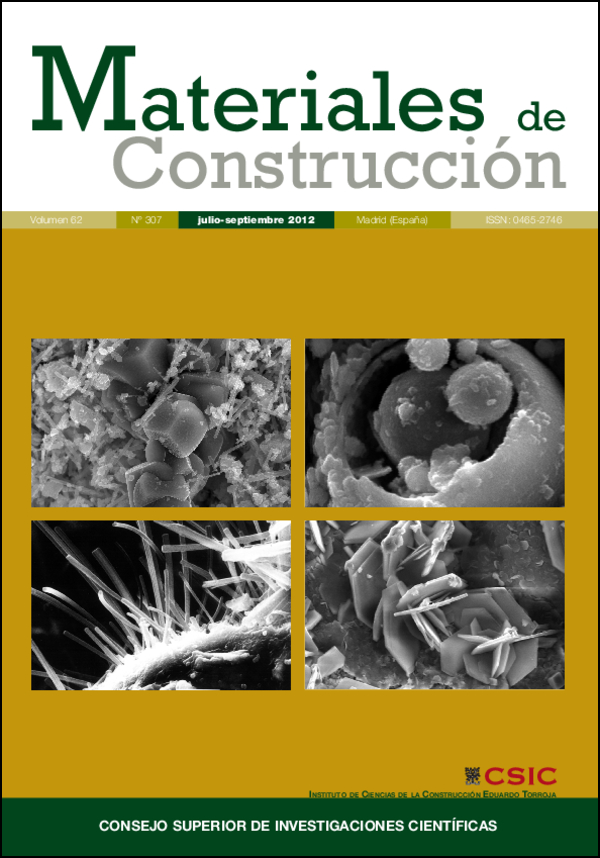Comparative Study on Acoustic Behavior Between Light Multi-layered and Traditional Façades
DOI:
https://doi.org/10.3989/mc.2012.03211Keywords:
physical properties, absorption, vibration, light multi-layered facades, acoustic behaviorAbstract
Light multi-layered facade systems in general have been acoustically little studied. The data available suggests they do not usually fulfil the sound insulation values required in the Technical Building Code (CTE) in particularly in noisy environments. Therefore the main objectives of this study, is to obtain light multi-layered façade systems with a high degree of acoustic insulation that can be used in noisy environments. While in turn showing excellent thermal characteristics, without neglecting important aspects such as the sustainability of materials, industrialization, costs, among others. This article will explain the process that has been followed to carry out an investigation on the acoustic behaviour of light multi-layered facades. For this purpose acoustic behaviour and sound intensimetry measurement methods have been used. After obtaining these results, a comparison between light multi-layered and traditional facades was made.
Downloads
References
(1) Lawson, R. M. “Industrialization in Construction- la Jornada Innovación Vivienda y Asuntos Sociales. (Bilbao 7 de Febrero de 2008). Pag. 79-82.
(2) Díaz, C.; Jiménez, M.; Navacerrada, M.A. & Pedrero, A.: “Propiedades acústicas de los paneles de carrizo”. Materiales de Construcción [online], manuscrito aceptado (2010), doi: 10.3989/mc.2010.60510
(3) Ministerio de Vivienda. . “Catálogo de Elementos Constructivos del Código Técnico de la Edificación” (CTE). (2010).
(4) Ministerio de Ciencia e Innovación (MICINN). “Memoria Justificativa del Proyecto BALI “Building Acoustic for Living”. (2011).
(5) Norma UNE-EN ISO 140-3:1995. “Acústica. Medición del aislamiento acústico en los edificios y de los elementos de construcción. Parte 3: Medición en laboratorio de aislamiento acústico al ruido aéreo de elementos de fachada y de fachadas”. (1995)
(6) Norma IEC 1043: “Instruments for the measurement of sound intensity”. (1993).
(7) Norma ISO 9614-1. “Acoustics - Determination of sound power levels of noise sources using sound intensity -- Part 1: Measurement at discrete points”. (1993).
(8) Ministerio de Vivienda. “Código Técnico de la Edificación. Documento Básico HR Protección frente al ruido”. (2009).
(9) Consejería de Vivienda y Asuntos Sociales del Gobierno Vasco. Acoubad (Herramienta de modelización del comportamiento acústico del edificio).
Downloads
Published
How to Cite
Issue
Section
License
Copyright (c) 2012 Consejo Superior de Investigaciones Científicas (CSIC)

This work is licensed under a Creative Commons Attribution 4.0 International License.
© CSIC. Manuscripts published in both the print and online versions of this journal are the property of the Consejo Superior de Investigaciones Científicas, and quoting this source is a requirement for any partial or full reproduction.
All contents of this electronic edition, except where otherwise noted, are distributed under a Creative Commons Attribution 4.0 International (CC BY 4.0) licence. You may read the basic information and the legal text of the licence. The indication of the CC BY 4.0 licence must be expressly stated in this way when necessary.
Self-archiving in repositories, personal webpages or similar, of any version other than the final version of the work produced by the publisher, is not allowed.
















